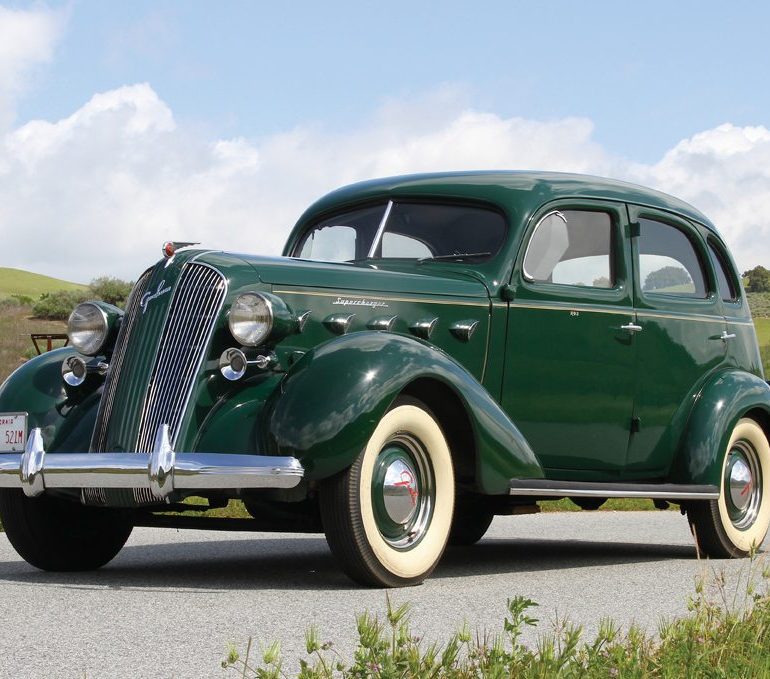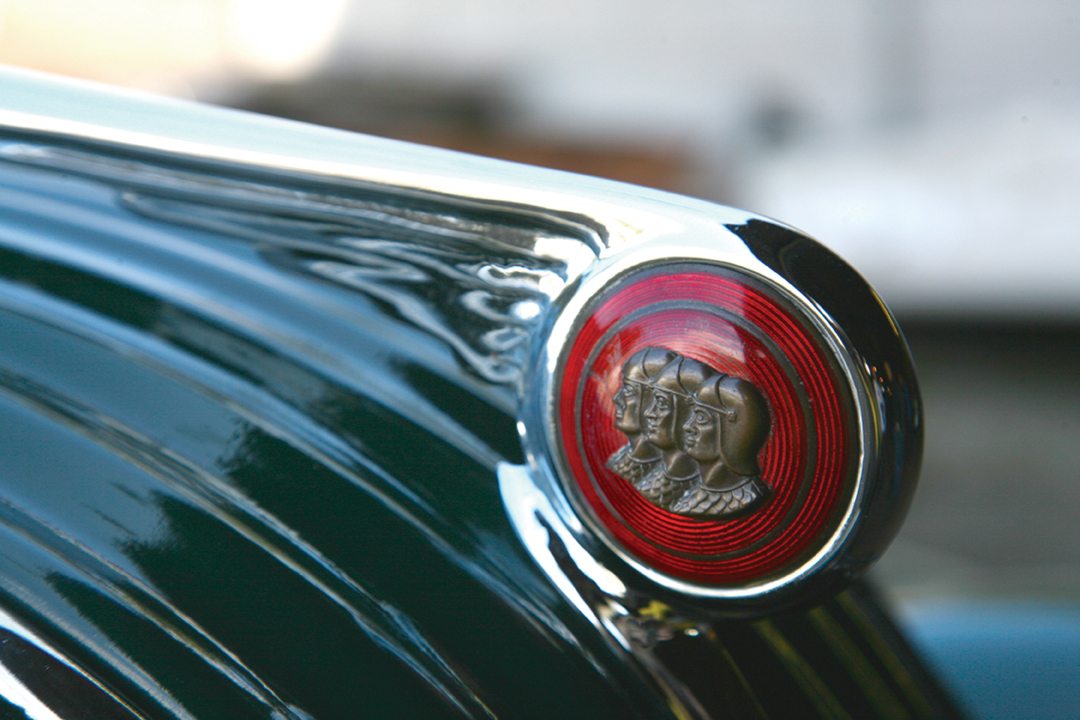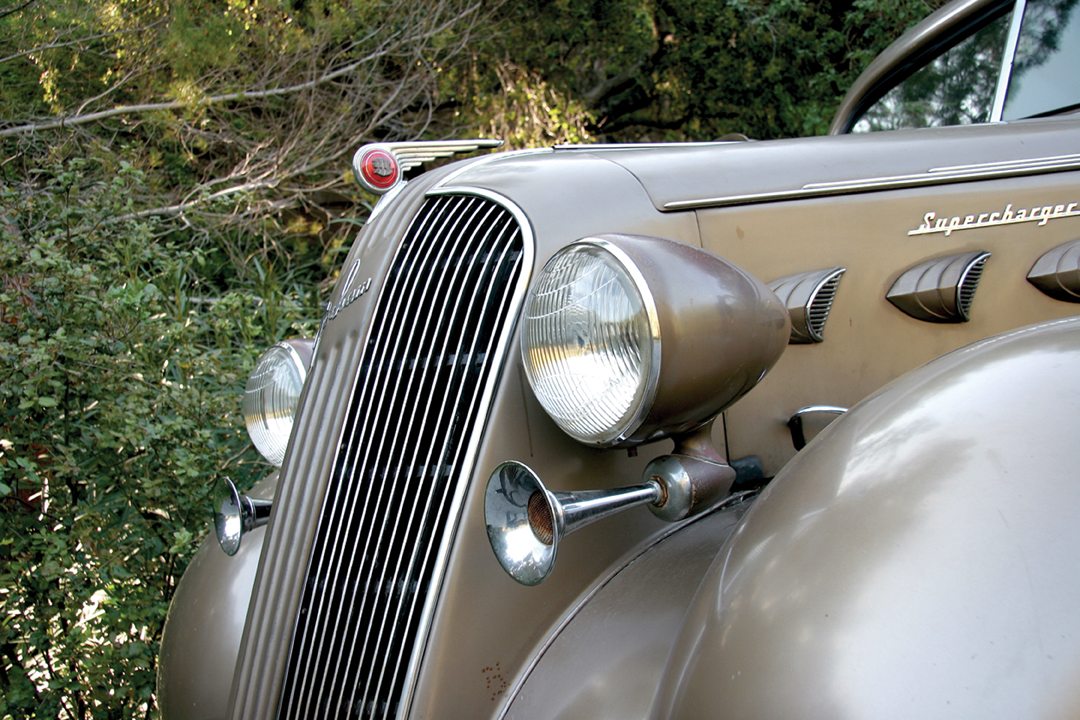Timing is everything, and Graham’s great automobiles are a proof—unfortunately. That’s because, despite the fact that their company made great cars, the Graham brothers got into the business at the worst possible time. As a result, most of us have never even seen a Graham. My experience with Grahams was restricted to old black and white photos until I recently spotted a 1937 Supercharger at a top restoration shop in Southern California, and then, incredibly, later I found a restored sedan from the same year at the De Rose winery in Hollister, California.

The first 1937 Graham I discovered was a top of the line 120, which meant it had the longer wheelbase and bigger engine equipped with a supercharger. It was a remarkably unsullied original coupe, and I test-drove it through the hills behind Chris Kidd’s restoration shop first. Later, I will describe what it was like to drive a 116 model that was much the same car in sedan form fully restored. Each example yielded different insights, and both were remarkable time machines.

The 116-inch wheelbase version came with a 106 horsepower, 199.1-cubic-inch six, and the 120-inch wheelbase model boasted 116 horsepower out of its 217.8-cubic-inch six. How many supercharged coupes were actually built is not known, although Graham did produce a total of 13,987 cars for the 1937 model year. Superchargers were available for both of the Cavalier series offerings.
Opportunities to drive Grahams don’t come along often, so when we found the coupe at Chris Kidd’s legendary Tired Iron restoration facility in Monrovia, California, I knew I had to cadge a spin in it if at all possible. Only 200 of these top-of-the-line Grahams were produced that year. And this one was a remarkably original car with but a hint of the patina of 77-plus years of existence.
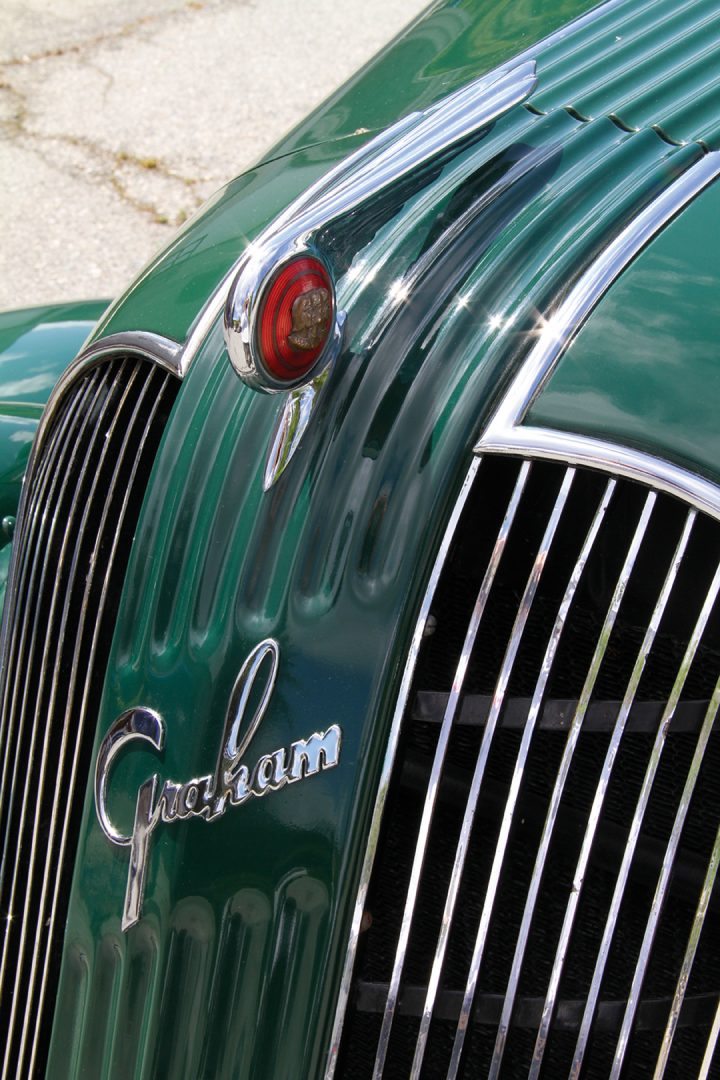
Driving the Coupe
The coupe had been part of a large collection of classics used for movie work that was being sold off, so I had to act fast. Kidd—who was preparing the car for sale—generously made the necessary phone calls and got me a chance to get behind the wheel of this remarkably preserved machine. We then took the car for a little journey that took us back to the 1930s.
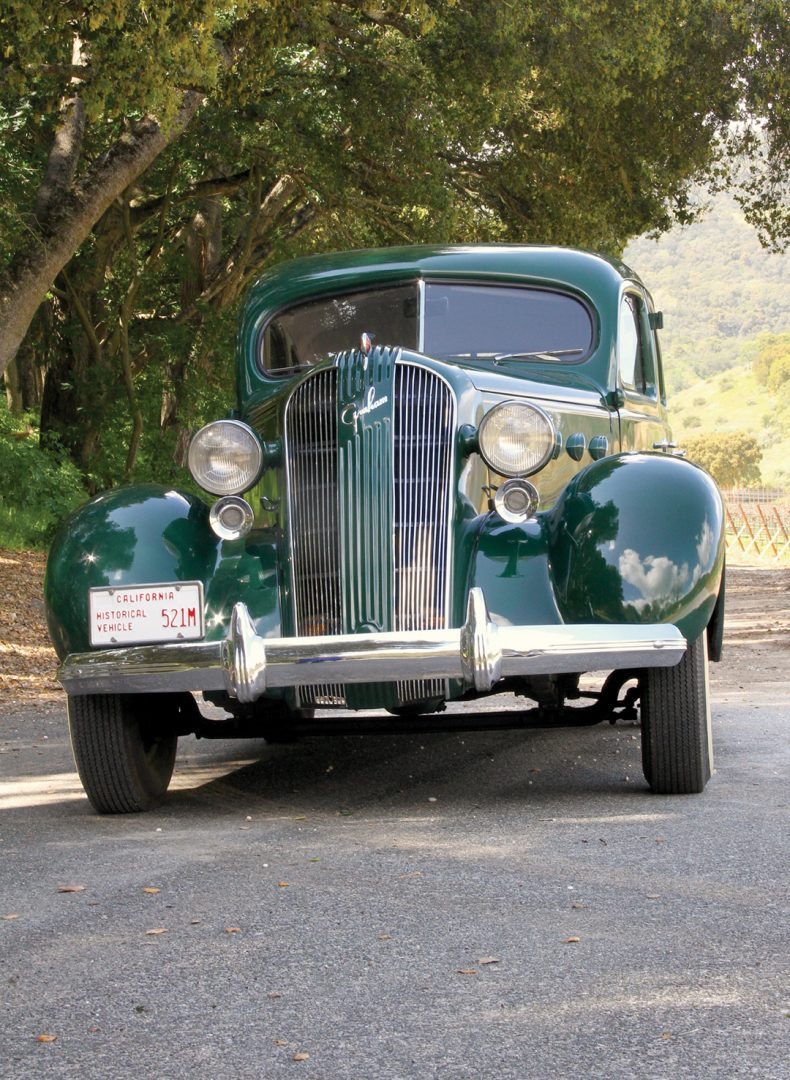
I pull the manual choke out a little and step on the starter pedal. It seems as if the battery is almost dead at first because the engine barely turns over, but then it catches. This is also typical of many of Graham’s contemporaries with six-volt electrical systems. As the engine warms, I ease in the choke and it begins to idle smoothly. I depress the rather soft clutch and pull the floor-mounted shift lever into gear. We glide away from the curb and are off. There is the usual subtle first-gear whine, but shifting is clean and precise.
Acceleration is surprising. Most moderate displacement, inline, six-cylinder flathead engines of the late ’30s are less than impressive in this respect, but when one judges the Graham against its contemporaries, it is quite a surprise. The coupe is not in any way a muscle car, but it is no slug either. In tests done in the ’30s, the Graham was only a second slower than a supercharged Cord from 0-60, and considering that the Cord also had a much larger V8, that is quite impressive.
The engine, with its lightweight aluminum pistons, doesn’t run out of revs right away either, unlike many cars of the era. The Graham-designed and manufactured supercharger is quiet and operates at all rpm, and the engine makes a fair amount of low-end torque, so there is plenty of power even from a standing start. Coupled with the optional electric overdrive available in 1937, this car could easily hold its own on the freeways of today. A 116 model also achieved 23.95 mpg during the Gilmore Economy Run, winning its class.
The boost from the supercharger is only four to six pounds, which raises the normally aspirated 217.8-cubic-inch 6-cylinder, from 85 to 116 horsepower. For the day, that was quite impressive. I am told that the supercharged model gets better fuel economy than the less expensive carbureted engine as well, because the supercharger does a better job of atomizing the fuel for its journey down the long inline manifold runners. That means less fuel condenses along the way.
The aluminum heads used on all the Graham engines of the era also dissipated heat better than the standard cast iron heads common to most cars of the time. This allows for a higher 7.5:1 compression ratio, giving the car a bit more oomph as well. Fuel octane ratings were down in the 70s back in the 1930s, and inconsistent to boot, so going any higher with the compression would have resulted in detonation problems, especially when running a supercharger.
Steering is light and comfortable, and the ride is acceptable, if a little choppy. The hydraulic brakes with their 11-inch drums are excellent for the period and do not fade on downhill runs. Also surprising is the fact that there is very little of the body lean so common to cars from the 1930s. I attribute this to the car’s large front anti-roll bar, modern aircraft tubular shock absorbers, and leaf springs at all four corners, mounted outboard of the frame.
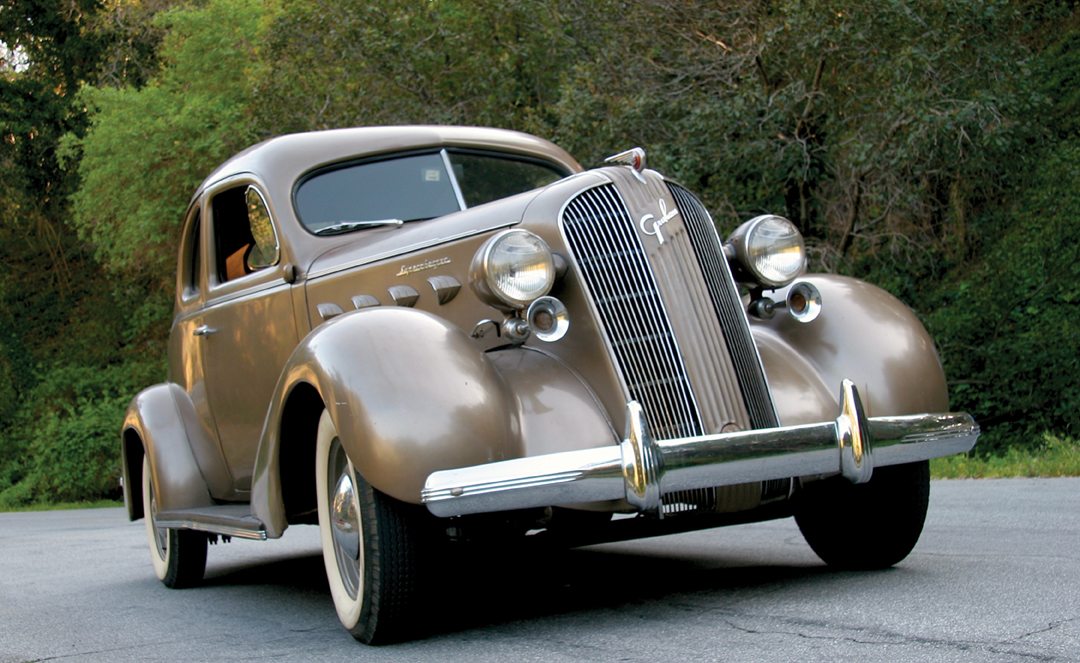
Driving the Sedan
We spotted the 116 Series four-door sedan at the De Rose Winery recently, and had to take it out for a ride too. The De Rose Winery is situated at the base of the Gavilan Mountains near Hollister, California, and along with a great car collection, offers some excellent traditionally crafted wines. If you are in the area, I suggest you stop in, have a look at the cars, and knock back a few samples of their wine. The auto museum is not open every day, so call ahead before stopping in.

This particular example is significant because it was once owned and restored by Assistant Chief Engineer Floyd F. Kishline, the fellow who originally designed the supercharger for Graham. It is also the very last Graham off the assembly line in 1937. In 1938, the company went to an all-new look called the “Spirit of Motion” designed by Amos Northup, but more on that later.
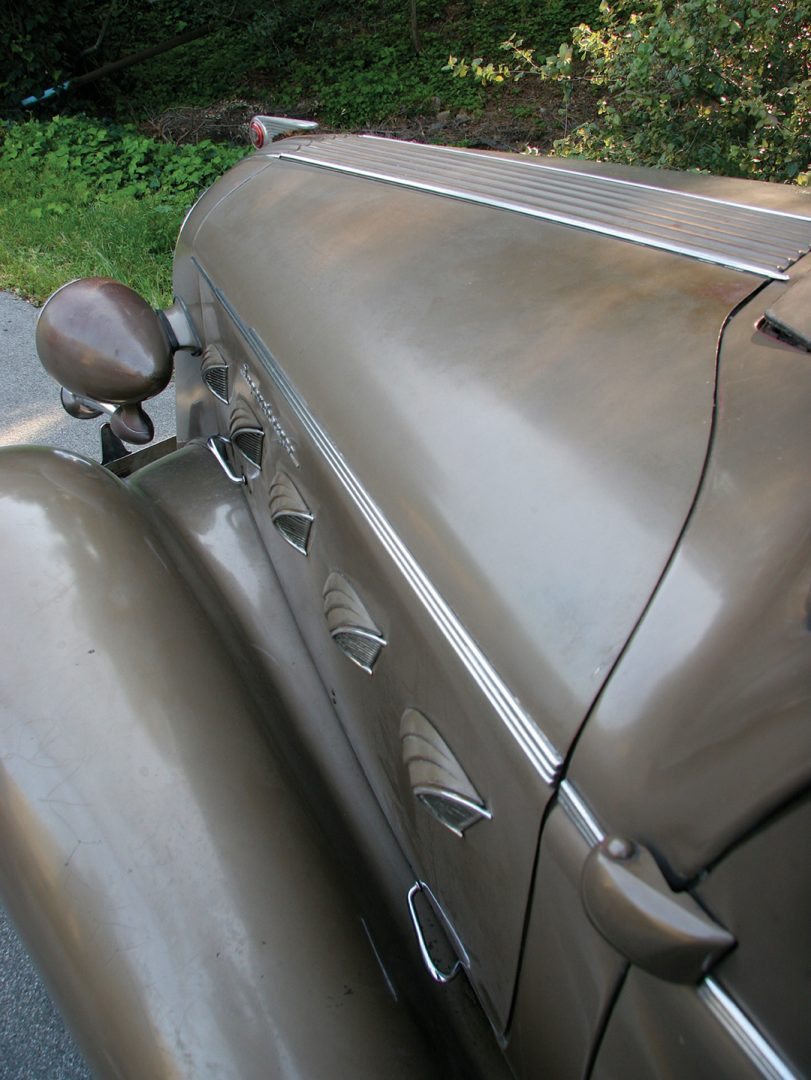
Driving a restored and maintained 1930s mid-priced automobile tells you just how nice these cars were when their suspension and shock absorbers were new, their steering tight, and their engines fresh. Granted, they are geared a bit low for modern freeway speeds, but remember, the first modern freeway in the U.S. was in Pasadena, California, which opened in 1940. The speed limit on it was just 45 miles per hour, so the 1937 Graham was more than equal to the fastest roads of the day, and would hold its own even now.

If I wanted the most stylish Graham of 1937, I’d choose the coupe. I have always loved the ’30s era coupe styling anyway, but if I were going out with friends on a tour, the sedan would be my choice. Of course, for less money you could have had a Cavalier 116 with a normally aspirated version of the same engine, but it would have been more mundane to drive.
However, there were other features of these cars that, though still common practice at the time, were becoming a bit dated for a mid-priced car. The pedal starter, manual choke and solid front axle instead of independent front suspension were features more common to low priced vehicles of the time. Also, though GM had pioneered the one-piece turret top in 1936, the Graham sedans still had inserts, even though they were made of steel. And wind wings, standard on many cars, were an extra cost option on Grahams.
Considering the fact that the Graham-Paige Motor Corporation had been struggling against a terrible lack of funds for years, it was impressive that the company was still in business at all, much less able to build such a surprisingly decent, well crafted car. For 1936 and 1937 Graham’s bodywork was adapted from the 1936 REO Flying Cloud body built by Hayes, and for which Graham paid royalties to REO of $7.50 per car.
And then, later in 1937, the dies, tools and fixtures for the company’s low-priced Crusader line were sold to Nissan in Japan, which is why you see the Japanese military brass driving around Tokyo in Grahams in old war footage. After the war this stigmatized the company to some extent, though there was no way for the Graham Brothers to know that four years later the Japanese would go to war with us.
The REO bodies were adapted because Graham did not have the financial resources to restyle its line, which was handsome but looking dated by the mid-’30s. And then REO collapsed soon after the deal was struck, leaving Graham with a contemporary, if not totally unique new look. For the 1937 offerings, the basic REO body was treated to a new one-piece bumper, two-piece windshield and a front end reminiscent of the 1936 Pontiac and the 1937 Plymouth. The overall effect was not revolutionary, but looked up to date.
The company ultimately failed, but there was never a shortage of business acumen at Graham; it was just that they couldn’t have chosen a worse time to go into the automobile business. The Graham brothers, Joseph, Robert and Ray (the three cavaliers on the car’s badge), were successful self-made men before they ever started building cars. Back in 1901, Joseph Graham became secretary and treasurer of the Lythgoe Bottle Company in Indiana. Then, in 1905, Joseph and his father purchased the firm outright. In 1907, brother Robert joined the company and it was renamed the Graham Glass Company.
It was the Graham Glass Company that developed the modern technique of pouring bottles upside down. This permitted the glass to build up around the crown, thus making the bottle strong enough to accept a cap instead of a cork. The Graham Glass Company later became part of Libby-Owens-Ford (LOF). Around this time the brothers expanded into other ventures as well, including the manufacture of trucks.

The brothers stayed on for another year until Dodge was sold to Chrysler, and then decided to go into the auto manufacturing business on their own in 1927. For $4 million they purchased the Paige-Detroit Motor Company—an auto-manufacturing firm that had been in business since 1909. The brothers could easily afford to do this because along with the profitable truck operations, they had been involved in a number of other successful ventures including farming and farm machinery.
They debuted an all-new line of cars for 1928 that offered both six- and eight-cylinder engines. And, in February of that year, they changed the name of the company to Graham-Paige Motor Corporation. The new line was a success, and the company finished the year with sales of 72,965 cars, putting them 12th in what was then a very crowded market. In fact, the cars continued to do well through 1929 when the second series was introduced.
Production facilities at their Warren Street plant were doubled in size, and the 50,000th Graham-Paige for that year was produced by June 7. The future must have looked rosy indeed. Who could have guessed, at that point, that by the end of the year the automotive industry would start to undergo its first mass extinction due to the stock market crash and the Great Depression to follow.

Sales continued to languish during 1931 across the spectrum of automakers. But the Grahams devoted themselves to their new model to debut in 1932, later dubbed the Blue Streak. A new banjo frame was developed that allowed the rear axle to protrude through the frame rails, thus lowering the center of gravity of the car. And the longitudinally mounted leaf springs were attached outboard of the frame, thus taking the car still lower and improving handling and body lean.
A new improved power plant was developed from the company’s existing 245.4-cubic-inch inline-eight, with five main bearings and improved crankcase ventilation. The most innovative aspect, however, of the new engine was its aluminum high compression head that helped bump it up to 90 horsepower.
Amos E. Northup at the Murray Corporation—a body manufacturer—headed a team that did the styling for the Blue Streak and it was one of the most beautiful designs of the era with its sloped back, subtle
V-shaped grille, skirted fenders that hid the spattered mud behind the wheels, and its general low, clean classic profile. The new Graham line was also one of the first to use laminated safety glass, thanks to the brothers’ interest in Libby Owen Glass Company.
The 1932 Graham Blue Streak was also the first production car offered with pearlescent paint schemes made from fish scales. The effect was startling, though impossible to do justice in the color advertising of the day. Sadly, even though the cars were major hits around the country, sales were discouraging. By ’32, the United States had hit bottom, and 20 percent of the workforce was jobless. Most people were more concerned with feeding their families than upgrading their transportation.
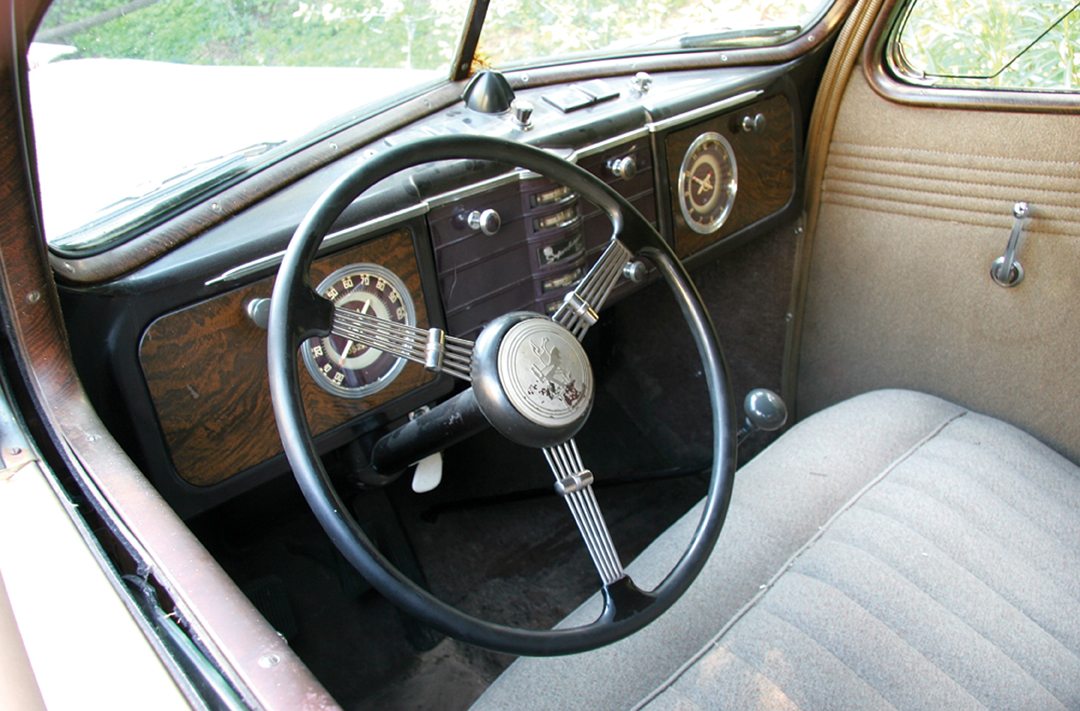
Sales continued to languish through 1937, and in 1938 the Cavalier and Supercharger models received daringly restyled coachwork that Graham marketed as the Spirit of Motion, which became known to the general public as the shark nose Grahams. The front end had an extravagant buxom Delahaye look with lots of chrome, but the rest of the car had a sort of blocky appearance.
It was Amos Northup’s last auto design, as he died shortly after completing it. The new look—which was carried over into 1939 and 1940—was not a success, no doubt partly because 1938 was a recession year. Again, it may have been a matter of timing.
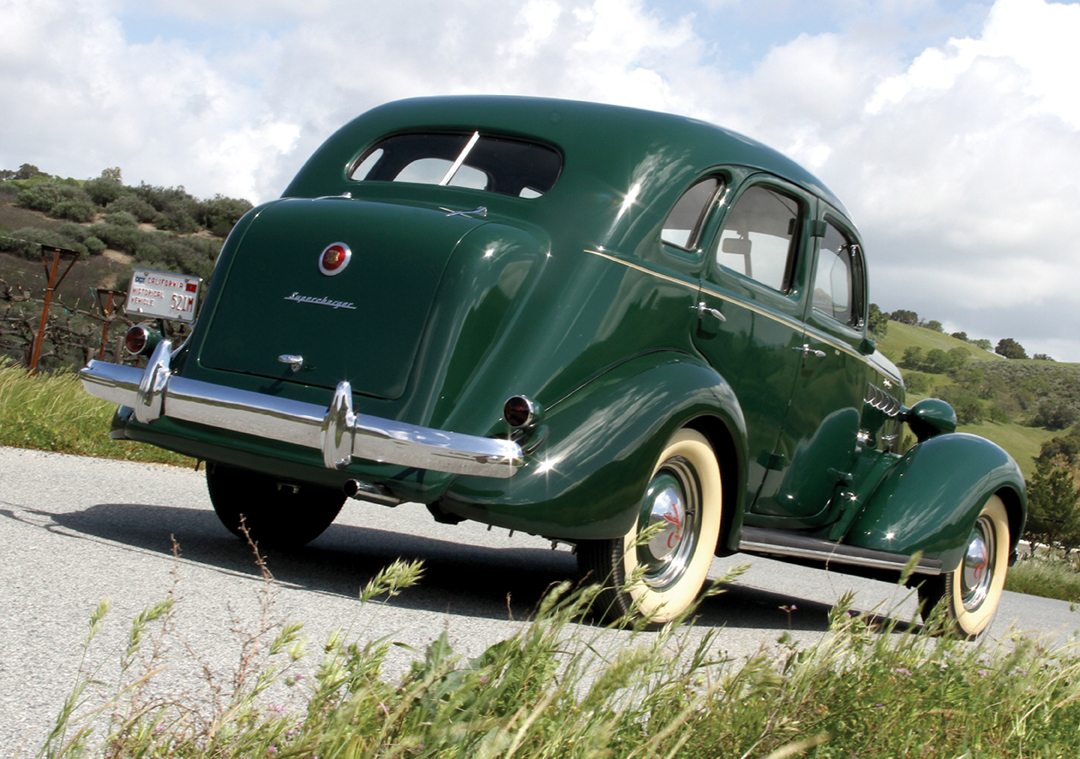
These turned out to be some of the most beautiful cars either company ever made, but there were major production problems. The Hups and Grahams had unitized bodies, and were built on the same line as Graham’s Special, which still had the old Spirit of Motion styling and used separate frames. As a result, there was a lot of confusion. Further, the Cord bodies had very complex top stampings that slowed assembly considerably.

Suffice it to say, that among many other things, the Graham brothers built some great cars, but they couldn’t have gotten into the game at a worse time. The rest is history. I wouldn’t shed too many tears for the guys though, because they later wound up owning Madison Square Garden.


